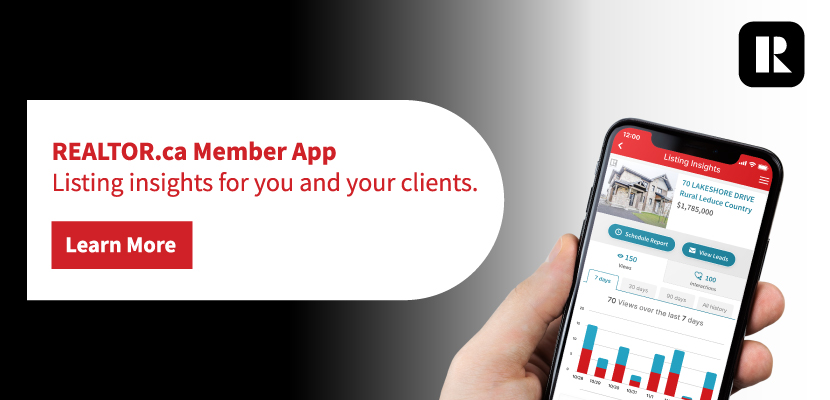Now more than ever, people rely on the internet for just about everything — from shopping for products to reading reviews and looking for solutions to their problems.
For you as a real estate agent, this means that potential clients are just a click away from finding your website and choosing you to help them buy or sell their homes.
But here’s the real question: is your website doing its job of converting visitors into clients, or is it pushing them away?
Here, we’re diving into the five most common website mistakes that can hurt your credibility and make it difficult to get those conversions. Plus, we’ll also share some easy fixes that will transform your website into a powerful tool that converts clients on autopilot.
1. Typos and grammatical errors
First impressions matter, and nothing undermines your professionalism like typos and grammatical errors on your website. Although no one deliberately leaves errors behind, they can still erode trust with potential clients, leaving them thinking, “This realtor doesn’t pay enough attention to detail. How could I possibly trust them with the biggest investment of my life?”
Quick fix: Luckily, this mistake is easy to avoid. Consider using a tool like Grammarly to scan for errors or have a trusted friend or colleague read your website copy with fresh eyes before you hit publish.
2. Headlines that aren’t optimized
Most people have short attention spans, meaning they’re more likely to skim or scan your website instead of reading it in its entirety. This is why headlines are so important. Their job is to capture your readers’ attention and encourage them to delve deeper into your content.
If your website isn’t converting as well as you’d hoped, your headlines might be to blame. Headlines across your site should be descriptive and compelling, giving readers the information they need to decide if your services are right for them.
Quick fix: Visit each page of your website and ensure it’s skimmable — meaning readers know exactly what you do and how you help just by reading your headlines. For example:
“Explore Expert Advice for Buying and Selling in [Insert City]” or
“Maximize the Sale of Your Home in the Least Amount of Time”
3. Failing to understand your reader
Your website copy should resonate with your target audience — the homebuyers and sellers looking for your expertise. Nothing will make a potential client click away faster than generic language that doesn’t speak to their needs, desires and pain points.
Your ideal client needs to know that you understand their experience and feel confident you have the solution they’re looking for before they move forward. This should be clearly communicated across your website.
Quick fix: First, ensure you know exactly who your target audience is before crafting your copy. Once you’ve identified your target audience, write as if you’re addressing one specific person. This technique makes your writing more personal and relatable, helping readers feel understood and valued.
Use emotional language to connect with your audience on a deeper level. Address their concerns and aspirations directly. For example, instead of saying something generic like, “We’ll sell your home quickly,” try, “Selling your home can be overwhelming, which is why I promise to make the process as smooth and stress-free as possible.”
4. Poor user experience
A clunky or confusing website can be frustrating for visitors and drive them to leave the page before they even explore your services. Aesthetics matter, but functionality makes all the difference. Visitors expect intuitive navigation, fast loading times and a seamless experience across devices.
Quick fix: Simplify your website navigation with clear menus and a logical page hierarchy. Optimize images and videos for fast loading speeds. Ensure your website is responsive across all devices, meaning it looks and functions well on phones and tablets as well as desktops.
5. Neglecting your calls-to-action (CTAs)
So your copy sounds great and your reader is sold on your services, but without a clear call-to-action, your client won’t know the next best step to take to work with you. This is why you need CTAs to guide the client journey.
Whether it’s contacting you for a consultation, signing up for your newsletter or viewing your latest listings, clear and compelling CTAs prompt action and help convert visitors into leads.
Quick fix: Review each page to ensure there’s a CTA that aligns with the page’s purpose. Use action-oriented language in your CTA buttons, such as:
“Contact Us Today,”
“Explore Our Listings” or
“Subscribe for Market Insights.”
Long story short: a well-optimized website is like having a member of your sales team available 24/7 to showcase your expertise and help potential clients feel confident in choosing you for their real estate needs.
Take the time to review your website today for these common mistakes and implement these simple fixes. Doing so will ensure your website works effectively as a powerful tool for your real estate business.

Web of Words is an award-winning creative marketing agency passionate about helping entrepreneurs use their voices, share their stories and grow their businesses. Specializing in copywriting, web design, branding and social media marketing, they’ve helped hundreds of small businesses expand their impact online and off. Find out more at webofwords.ca.














